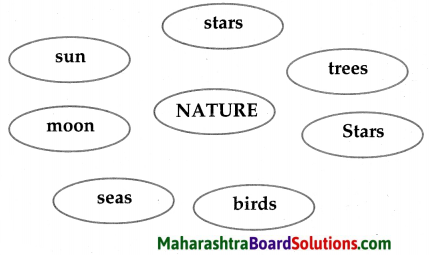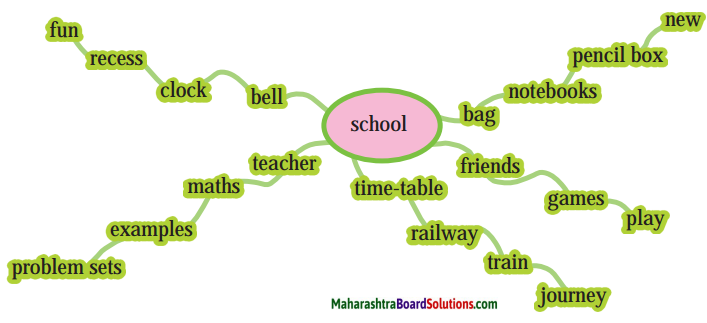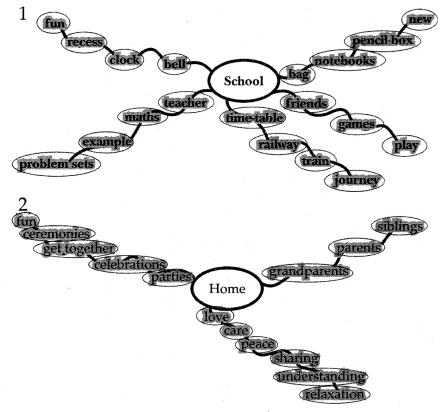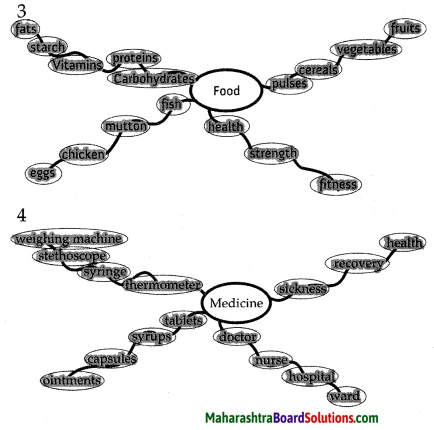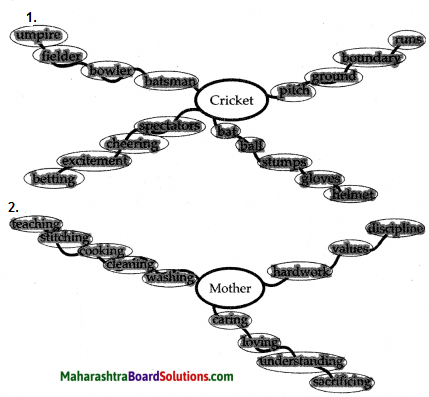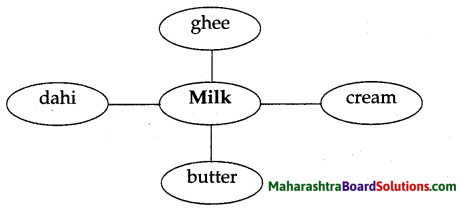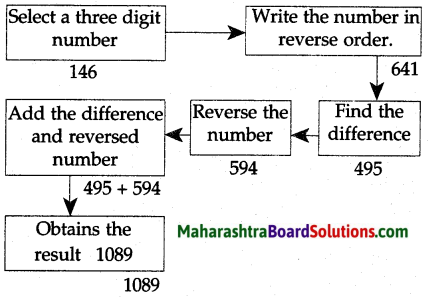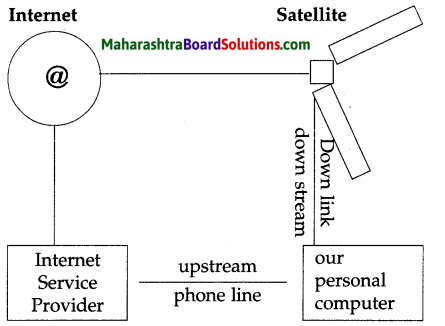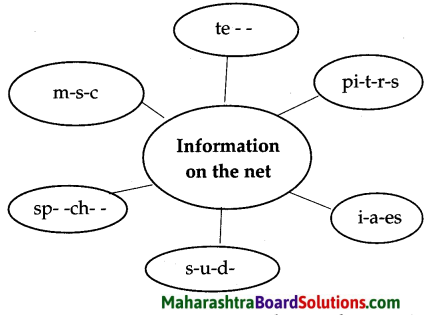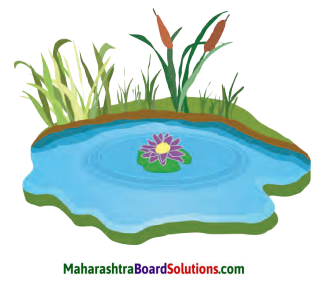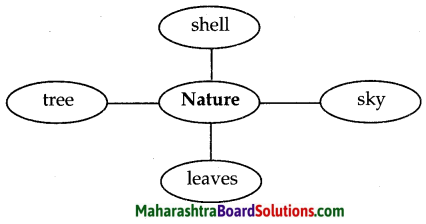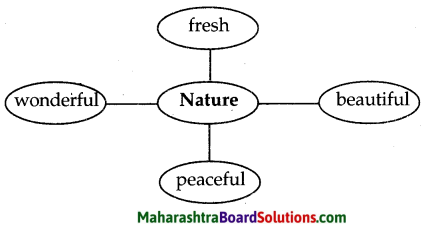Std 5 English Lesson No 32 Helen Keller Question Answer Maharashtra Board
Balbharti Maharashtra State Board Class 5 English Solutions Chapter 32 Helen Keller Notes, Textbook Exercise Important Questions and Answers.
5th Std English Poem Helen Keller Question Answer
English Balbharati Std 5 Digest Chapter 32 Helen Keller Textbook Questions and Answers
Answer the following questions.
Question 1.
How did Helen overcome her handicaps?
Answer:
Helen overcame her handicaps because of her own courage and also that of her wonderful teachers from whom she learned to read, write and talk.
Question 2.
What part did Anne Sullivan play in Helen’s life?
Answer:
Anne Sullivan, herself nearly blind, taught Helen to read and write by trying the deaf and-dumb finger alphabet method. She also taught her to feel the things, to understand the meaning of the word. Anne Sullivan was with Helen all through her time at the University.
![]()
Question 3.
How did Helen Keller help other blind people?
Answer:
Throughout her life, Helen helped other blind people to find courage. She travelled all over the world inspiring everyone by her example.
Question 4.
Helen Keller’s life is the story of……
a. blind woman.
b. courage, patience and struggle.
c. helpless, unfortunate girl.
Answer:
Helen Keller’s life is the story of courage, patience and struggle.
2. Activity
Question 1.
What is meant by ‘Honour the white cane’?
Answer:
The people who are blind or have a partial loss of vision carry a long white cane which signifies that they are self-reliant and independent. ‘Honouring the white cane’ means respecting the people who are blind or visually impaired and ensuring that they don’t face any difficulty in their day to day life. We should extend a helping hand to them and help them overcome the challenges they face in life and thus ‘Honour the white cane’.
![]()
Question 2.
Find out what ‘Braille’ is.
Answer:
Braille is a system of raised dots that can be read with the fingers by people who are blind or who have very low vision. It is a kind of code language. Each alphabet is arranged by one to six raised dots known as I cell’. A single cell can be used to represent an alphabet letter, number, punctuation mark, even a whole word.
Question 3.
Find out the difference between the fingerspelling method, sign language and Braille.
Answer:
A sign language is a language that uses body language to convey meaning through movements of the hand, arms, or body, and facial expressions to express the speaker’s thoughts.
Finger spelling is the process of spelling out words by using signs using fingers that correspond to the letter of the word.
Braille is a form of written language for the blind, in which characters are represented by patterns of raised dots that are felt with the fingertips.
3. Complete the following. Example: patient – patience.
Question 1.
- attend ………
- enter ……….
- differ ………..
Answer:
- attend – attendance
- enter – enterance
- differ – difference
![]()
English Balbharati Std 5 Answers Chapter 32 Helen Keller Additional Important Questions and Answers
Answer in one sentence:
Question 1.
When would Helen get into terrible tempers?
Answer:
Helen used to get into terrible tempers when she could not explain what she meant, or understand what others wanted.
Question 2.
Who changed Helen’s life?
Answer:
When Helen was nearly seven, Anne Sullivan came to teach her and look after her and this clever and devoted teacher changed Helen’s life.
Question 3.
According to Anne which was the only way to talk to Helen and teach her to say what she wanted?
Answer:
According to Anne the only way to talk to Helen and teach her to say what she wanted was to teach her the deaf-and-dumb finger alphabets.
Question 4.
How did Helen learn to write and read?
Answer:
Helen under Miss Sullivan learned to write on a special frame and ridges to keep the lines straight and began to read Braille books.
Question 5.
Which qualities helped Helen to talk, read and write?
Answer:
Hardwork, patience and willingness to practice and above all courage, all helped Helen to talk, read and write.
![]()
Question 6.
Complete the web diagram using qualities displayed by Helen Keller which make her an inspiration – a role model.
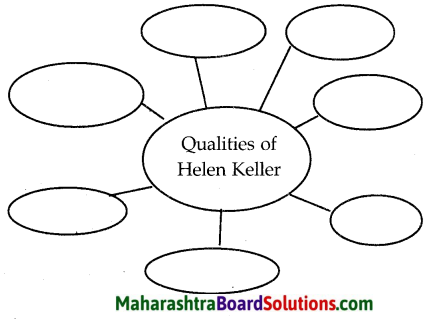
Answer:
courage, patience, determination, persistence, hard work, helpful, intelligence.
Question 7.
Make sentences with the following words: patience, persistence, hard work
Answer:
- Patience : Patience and perseverance leads to success.
- Persistence : Persistence in his efforts to reach his goal helped him break the world record.
- Hard work : There is no substitute for hard work.
Language Study :
Question 1.
Give the noun forms of:
- understand
- devoted
- blind
- sensitive
- excited
Answer:
- understanding
- devotion
- blindness
- sensitivity
- excitement
![]()
Question 2.
Give the verb forms of:
- meaning
- straight
- sensitive
- inspiring
- special
Answer:
- mean
- straighten
- sensitive
- inspire
- specialise
Question 3.
Give the adjective forms of :
- difference
- description
- noise
- conversation
- patience
Answer:
- different
- descriptive
- noisy
- conversational
- patient
![]()
Question 4.
Match the meanings:
| 1. active | a. readily doing what one is told to do |
| 2. obediently | b. completely |
| 3. entirely | c. extremely |
| 4. incredibly | d. one that functioned well |
Answer:
| 1. active | d. one that functioned well |
| 2. obediently | a. readily doing what one is told to do |
| 3. entirely | b. completely |
| 4. incredibly | c. extremely |
Do as directed :
Question 1.
- She remembered a few words. (Rewrite the sentence beginning with : She did not ………..)
- This clever and devoted teacher changed Helen’s life. (State the part of speech of the underlined words)
- Miss Sullivan gave Helen a doll. (Rewrite the sentence beginning with: A doll us given…)
- She became so excited that she could hardly control herself. (Pick out the adverbs)
- Anne Sullivan herself had been nearly blind. (Pick out the pronoun)
- Helen had an active mind and a clever brain. (Pick out the articles)
- The papers were set in Braille. (Form a wh question to get the underlined part as the answer)
Answer:
- She did not forget a few words.
- clever, devoted : Adjectives
- A doll was given to Helen by Miss Sullivan
- so, hardly – adverbs
- herself – pronoun
- Articles: an, a
- What were the papers set in?
![]()
Reading Skills, Vocabulary and Grammar
Read the following extract and answer the questions given below.
Question 1.
Arrange the following in order of occurrence.
- Learned to write
- Learned to type
- Had long conversation with her teacher
- Learned to talk
- Learned to spell words
- Began to read braille book
Answer:
- Learned to spell words
- Had long conversations with her teacher
- Learned to write
- Learned to type
- Began to read braille book
- Learned to talk
Question 2.
What helped Helen to learn very fast?
Answer:
Helen’s quick brain and good memory helped her to learn very fast.
Question 3.
What did Miss Sullivan do, wherever they went?
Answer:
Wherever they went, Miss Sullivan described things to her and told her what people were saying.
![]()
Question 4.
What did Helen begin to read?
Answer:
Helen began to read Braille books.
Question 5.
Who taught her to talk aloud? How?
Answer:
A special teacher taught her how to move her hips and tongue thus teaching her to talk.
Question 6.
The progress made by Helen was not an easy one. (Pick out a line to prove this statement)
Answer:
All this was hard work, needing endless patience by both pupil and teacher, and long practice.
Question 7.
Miss Sullivan described things to her. (Use the word ‘description’ and rewrite the sentence without changing its meaning)
Answer:
Miss Sullivan gave her a description of things.
![]()
Question 8.
Are you inspired by the life of Helen Keller? Give reasons.
Answer:
Yes, I am inspired by the courage, determination, focus and persistence displayed by Helen Keller.
Writing Skills :
Question 1.
Write an essay on:
Answer:
Our teacher: Our inspiration “Teachers plant seeds of wisdom which grow forever.” An ideal teacher can not only give us the right knowledge, fill us with hope, give wings to our creativity and imagination but also help us to lead our lives well- a life based on the right values and virtues. It was after Anne Sullivan’s entry into Helen Keller’s life that it changed her life for good. Rising above the disability if Helen achieved all that she had, it was due to the support of her devoted and loving teacher.
Our former President Dr. A.P.J Abdul Kalam too attributes his success to the role played by his teacher, Iyadurai Solomon. He told him to desire and dream for something from the heart and assured him that if he did, his dreams would come true. And for Dr. A.P.J Abdul Kalam it did. Let us respect our teachers who play many roles in our lives. They selflessly impart knowledge, tell us the right from the wrong and mould us into great citizens and wonderful human beings. Aware of our strengths and weaknesses they guide us to our goals. It is rightly said: ‘A society cannot rise above its teachers’.
![]()
Helen Keller Summary in English
Summary :
An inspiring account of courage, strength, determination and hard work, the story of ‘Helen Keller’ conveys the message ‘When the going gets tough, the tough get going At 18 months, when Helen was just beginning to talk she became terribly ill. This affected her sight and hearing too. As she was unable to hear, she could not talk. She became blind too. But with her will-power and courage, and under the able guidance of her wonderful teachers – Anne Sullivan and a special teacher – she learned to talk and write.
She went to school and college and lived a full and happy life. Throughout her life, she inspired other blind people to find courage through her own example. Helen Keller was and is an inspiration to the whole world. She showed what she could achieve through courage, patience and struggle. She lived to a ripe old age of eighty eight and passed away in 1968.
![]()
Meanings :
- terribly (adv) – seriously
- recovered (u) – returned to health
- instance (n) – example
- tempers (n) – fits of anger
- devoted (adj) – committed (here)
- sensitive (adj) – respond to the feelings of others
- darted (v) – run suddenly
- incredibly (adv) – extremely, unbelievably
- ridges (n) – a line where two upward slopes meet
- distinctly (adv) – clearly
- braille (n) – A system developed to help the blind read. Letters are represented by raised dots.
- passed away (phr) – died
English Balbharati Std 5 Answers Unit 4
- The Man in the Moon Class 5 Question Answer
- Water in the Well Class 5 Question Answer
- The Legend of Marathon Class 5 Question Answer
- All about Money Class 5 Question Answer
- A Lark Class 5 Question Answer
- Be a Netizen Class 5 Question Answer
- Give your Mind a Workout! Class 5 Question Answer
- Helen Keller Class 5 Question Answer
- Rangoli Class 5 Question Answer
